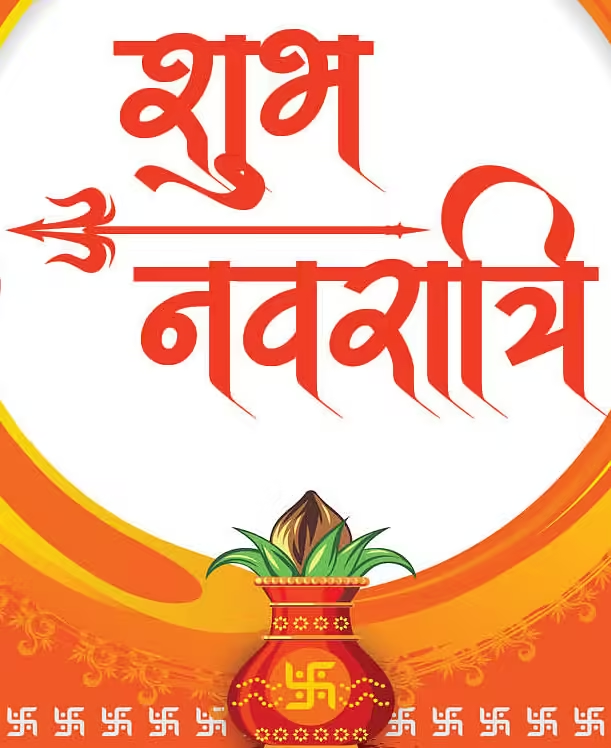Navaratri, also spelled as Navratri, is a Hindu festival celebrated over nine nights and ten days. The word “Navaratri” literally means “nine nights” in Sanskrit. The festival is dedicated to the worship of the Hindu goddess Durga or Shakti and her various forms, including Saraswati (goddess of knowledge), Lakshmi (goddess of wealth), and Kali (goddess of power).
Navaratri is observed in different forms and with various rituals across India, but the underlying theme of devotion, celebration, and the triumph of good over evil remains constant. Here’s an overview of how Navaratri is typically celebrated:
Ghatasthapana
The festival usually begins with Ghatasthapana, the ritual of installing a clay pot (ghata) symbolizing the deity. it means placing a kalasha or a pot, which symbolizes goddess Durga. This pot is filled with water and sown with barley seeds. It marks the beginning of the nine-day festival.The latter festival takes place The latter festival takes place in neighbouring Nepal and parts of Burma ,besides in northern India mainly maharastra
- Which Indian State is Known as The Land of the Gods

- Which Fasting food do we take in Nav Durga festival

- Uttarakhand’s Culture Elements

- UNESCO World Heritage Sites

- The French Revolution: A Turning Point in World History

- Religious Pluralism in India: Challenges and Triumphs

Durga puja and Fasting
Devotees observe fasts and perform special prayers and pujas during Navaratri. Many people abstain from consuming non-vegetarian food, alcohol, and certain grains and spices during this period. They offer prayers to the goddess and seek her blessings for prosperity and well-being.
Garba and Dandiya Raas
In many parts of India, especially in Gujarat and Rajasthan, Navaratri is celebrated with vibrant dance forms like Garba and Dandiya Raas. People gather in large groups, dressed in colorful traditional attire, and dance to the beats of folk music. Garba involves circular movements, while Dandiya Raas is performed with sticks.
Durga Puja
In some regions, especially in West Bengal, Navaratri culminates with the celebration of Durga Puja. Elaborate pandals (temporary structures) are erected, and beautifully crafted idols of Goddess Durga are worshipped with great fervor. The festival symbolizes the victory of goddess Durga over the buffalo demon Mahishasura, signifying the victory of good over evil.
Ayudha Puja:
In South India, Navaratri is also the time for Ayudha Puja, where people worship tools, instruments, and vehicles as a symbol of their profession and work. It is believed that offering prayers to these objects brings prosperity and success.
Saraswati Puja
The ninth day of Navaratri is dedicated to Saraswati, the goddess of knowledge, arts, and learning. Students place their books and instruments in front of the deity’s idol and seek her blessings for success in their studies and endeavors.
Vijayadashami
The tenth day of Navaratri, also known as Dussehra or Vijayadashami, marks the culmination of the festival. It celebrates the victory of good over evil, symbolized by the defeat of the demon king Ravana by Lord Rama. Effigies of Ravana, Meghnath, and Kumbhakarna are burnt in many parts of India to mark the occasion.
Navaratri is a time of joy, devotion, and cultural celebration, bringing people together in worship and festivities.






